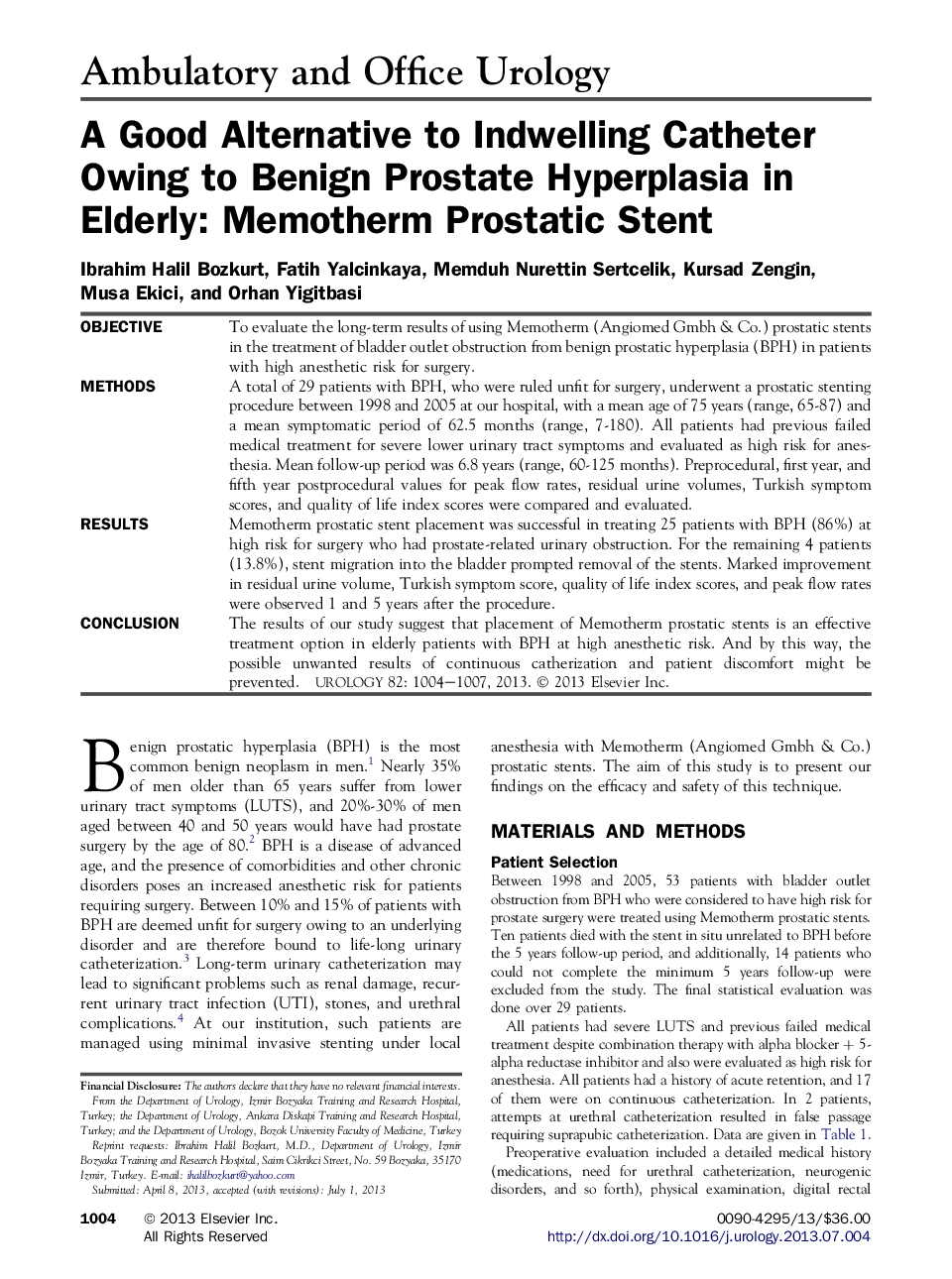| Article ID | Journal | Published Year | Pages | File Type |
|---|---|---|---|---|
| 3899208 | Urology | 2013 | 4 Pages |
ObjectiveTo evaluate the long-term results of using Memotherm (Angiomed Gmbh & Co.) prostatic stents in the treatment of bladder outlet obstruction from benign prostatic hyperplasia (BPH) in patients with high anesthetic risk for surgery.MethodsA total of 29 patients with BPH, who were ruled unfit for surgery, underwent a prostatic stenting procedure between 1998 and 2005 at our hospital, with a mean age of 75 years (range, 65-87) and a mean symptomatic period of 62.5 months (range, 7-180). All patients had previous failed medical treatment for severe lower urinary tract symptoms and evaluated as high risk for anesthesia. Mean follow-up period was 6.8 years (range, 60-125 months). Preprocedural, first year, and fifth year postprocedural values for peak flow rates, residual urine volumes, Turkish symptom scores, and quality of life index scores were compared and evaluated.ResultsMemotherm prostatic stent placement was successful in treating 25 patients with BPH (86%) at high risk for surgery who had prostate-related urinary obstruction. For the remaining 4 patients (13.8%), stent migration into the bladder prompted removal of the stents. Marked improvement in residual urine volume, Turkish symptom score, quality of life index scores, and peak flow rates were observed 1 and 5 years after the procedure.ConclusionThe results of our study suggest that placement of Memotherm prostatic stents is an effective treatment option in elderly patients with BPH at high anesthetic risk. And by this way, the possible unwanted results of continuous catherization and patient discomfort might be prevented.
